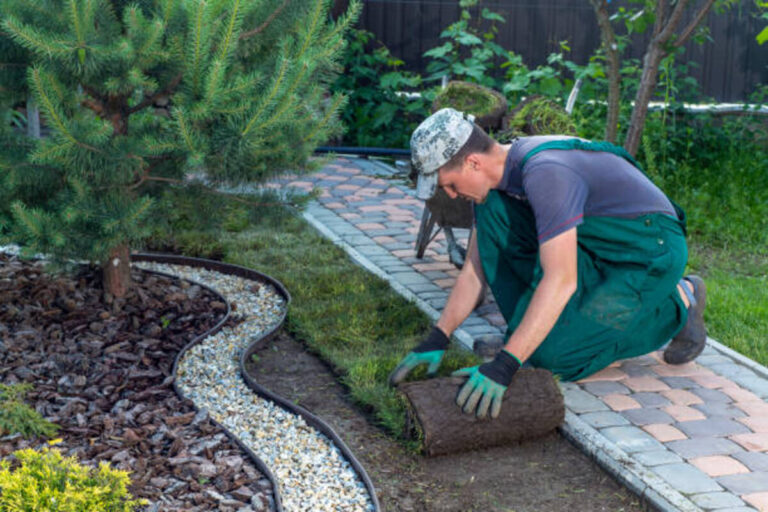
Contents
Soil is the foundation of any thriving garden. Proper soil treatment is crucial for healthy plant growth and effective lawn disease management. However, even seasoned gardeners can make mistakes that compromise soil health. In this article, we’ll delve into five common soil treatment mistakes you should avoid to ensure your garden flourishes.
Over-Fertilizing Your Soil
Understanding Fertilizer Needs
Fertilizers are like vitamins for your plants, providing essential nutrients that might be lacking in your soil. But more isn’t always better. Each plant has specific nutrient requirements, and overloading your soil with fertilizers can be detrimental.
Consequences of Over-Fertilization
Too much fertilizer can lead to nutrient imbalances, salt accumulation, and even burn your plants. This can hinder plant growth and make your garden more susceptible to diseases. Over-fertilized soils can also harm the environment by leaching into waterways and causing pollution.
Proper Fertilization Practices
To avoid over-fertilizing, test your soil to determine its nutrient needs. Use fertilizers sparingly and follow the recommended amounts on the packaging. Consider slow-release fertilizers, which provide nutrients over time and reduce the risk of over-fertilization.
Ignoring Soil pH Levels
The Role of Soil pH
Soil pH measures the acidity or alkalinity of your soil, influencing nutrient availability and microbial activity. Most plants prefer a pH between 6.0 and 7.0, but some have specific pH requirements.
How to Test Soil pH
Testing soil pH is straightforward. You can use a pH meter or test kit from a garden center. Collect soil samples from different areas of your garden for a comprehensive reading.
Adjusting pH Levels
If your soil is too acidic, you can add lime to raise the pH. For alkaline soils, sulfur or organic matter like pine needles can help lower the pH. Adjusting pH levels gradually is key to preventing shock to your plants.
Poor Drainage Management
Importance of Good Drainage
Good drainage is vital for preventing waterlogged soil, which can suffocate plant roots and lead to rot. Proper drainage ensures that excess water moves away from the root zone.
Signs of Poor Drainage
Indicators of poor drainage include water pooling on the soil surface, yellowing leaves, and stunted plant growth. If your garden remains soggy after rainfall, it’s time to address drainage issues.
Improving Soil Drainage
To improve drainage, consider incorporating organic matter like compost, which enhances soil structure and porosity. Raised beds can also help by elevating plants above poorly draining soil. Additionally, installing drainage pipes or gravel can facilitate water movement.
Neglecting Organic Matter
Benefits of Organic Matter
Organic matter, such as compost and manure, enriches the soil by providing essential nutrients, improving structure, and increasing water retention. It also supports beneficial microorganisms that promote healthy plant growth.
Types of Organic Matter
Common types of organic matter include compost, well-rotted manure, leaf mold, and green manure. Each type offers unique benefits and can be chosen based on your garden’s needs.
How to Incorporate Organic Matter
Incorporate organic matter into your soil by mixing it into the top few inches of soil before planting. This can be done annually or biannually to maintain soil health. Mulching with organic matter also adds nutrients and protects soil from erosion.
Compaction Issues
Causes of Soil Compaction
Soil compaction occurs when soil particles are pressed together, reducing pore space. This can be caused by heavy machinery, foot traffic, and even heavy rains.
Effects on Plant Growth
Compacted soil restricts root growth and reduces oxygen availability, leading to stunted plants and poor water infiltration. This creates an unfavorable environment for plants and beneficial soil organisms.
Solutions for Compaction
To alleviate compaction, aerate your soil using tools like a garden fork or aerator. Adding organic matter can also improve soil structure and prevent future compaction. Avoid walking on wet soil and create designated paths to minimize traffic in garden areas.
Understanding Lawn Disease Management
Connection Between Soil Health and Lawn Diseases
Healthy soil is the first line of defense against lawn diseases. Proper soil management practices can prevent conditions that favor disease development.
Common Lawn Diseases
Lawn diseases such as brown patch, dollar spot, and fairy ring can devastate your lawn. These diseases often thrive in poorly managed soils with nutrient imbalances or improper pH levels.
Preventive Measures
Prevent lawn diseases by maintaining balanced soil nutrition, proper pH levels, and adequate drainage. Regularly aerate your lawn and remove thatch buildup. Fungicides can be used as a last resort, but prevention through good soil management is the best strategy.
Conclusion
Avoiding these common soil treatment mistakes is essential for a healthy garden. By understanding and addressing issues like over-fertilization, soil pH, drainage, organic matter, and compaction, you can create an optimal growing environment. Remember, healthy soil is the key to successful lawn disease management and a thriving garden.